BIO RAD PharosFX 170-7892 Hardware Instruction Manual
- Category
- Scanner Transparancy Adapters
- Type
- Hardware Instruction Manual
This manual is also suitable for

Hardware Instruction Manual
for Catalog Numbers
170-9450 PharosFX System (532 nm)
170-9460 PharosFX Plus System (532 nm)
170-7890 External Laser (488 nm)
170-7892 External Laser (488 and 635 nm)
For Technical Service, Call Your Local Bio-Rad Office or, in the US, Call 1-800-4BIORAD (1-800-424-6723)
This instrument is for Laboratory Use Only
PharosFX
™
Molecular Imager
®
System
Copyright 2005 Bio-Rad Laboratories Inc.

Welcome
Dear Customer,
On behalf of Bio-Rad Laboratories, we would like to thank you for investing in the Molecular
Imager PharosFX Product Family. This combination of systems allows you the highest level
of flexibility for the best in isotopic and fluorescence imaging and we are sure that it will
provide you with many years of high quality imaging.
One of the best ways to familiarize yourself with the capabilities of your new PharosFX
system is to read this manual. In it, you will learn how to set up the system and operate all
hardware components. It is also recommended that you read the accompanying software
manual, to familiarize yourself with general acquisition functions and data analysis. After
reading this manual, please keep it close to your PharosFX system so that it can be
conveniently referred to.
Your PharosFX system is protected by a comprehensive instrument warranty agreement.
Please read this warranty (Appendix 3) thoroughly, so that you fully understand the coverage
it provides and are aware of your rights and responsibilities. One of the responsibilities of
system ownership is regular maintenance. Following the maintenance instructions provided
with this manual will help to keep your system and peripherals functioning optimally and will
protect your investment. Please also keep in mind that Bio-Rad offers a range of
comprehensive service agreements that can be tailored to meet your specific needs.
Bio-Rad Laboratories is dedicated to your total satisfaction and would be pleased to
answer any questions or concerns that you may have.
How to Contact Bio-Rad Laboratories
In the United States you can reach Bio-Rad Laboratories at the following numbers:
For general information
Toll free: 1-800- 4BIORAD
1-800-424-6723
Fax: 1-510-741-5802
email: [email protected]
For service or technical assistance
Toll free: 1-800-424-6723
Fax: 1-800-741-5802
Outside the United States contact your local Bio-Rad Laboratories office.
For information concerning Bio-Rad Laboratories and its products, visit our Worldwide Web
site at http://www.bio-rad.com.

Table of Contents
Section 1 General Information......................................................................1
1.1 About this Manual......................................................................................1
1.2 Safety Information......................................................................................1
1.2.1 General Cautions...........................................................................1
1.2.2 General Warnings..........................................................................2
1.2.3 Power Safety Information...............................................................2
1.2.4 Laser Safety Information ................................................................3
1.2.5 Screen Eraser Safety Information...................................................4
Section 2 Introduction...................................................................................4
2.1 System Capabilities ...................................................................................4
2.2 System Description....................................................................................4
2.3 Theory of Operation...................................................................................8
2.3.1 Fluorescence Detection Mechanism...............................................8
2.3.2 Storage Phosphor Detection Mechanism .......................................9
2.3.3 Data Processing and Analysis........................................................9
2.4 Overview of the Imaging Process.............................................................10
2.4.1 Steps in Fluorescence Imaging ....................................................10
2.4.2 Steps in Storage Phosphor Imaging.............................................10
Section 3 System Installation......................................................................11
3.1 Operating Requirements..........................................................................11
3.1.1 System Location...........................................................................11
3.1.2 AC Power Requirements..............................................................12
3.1.3 Host Computer Recommendations...............................................13
3.2 System Setup..........................................................................................13
3.2.1 Shipping Check............................................................................13
3.2.2 Unpacking....................................................................................13
3.2.3 Electrical and Communication Connections..................................15
3.2.4 Software Installation.....................................................................16
Section 4 System Operation ......................................................................16
4.1 Starting the Scanner................................................................................16
4.2 Fluorescence Operating Procedures........................................................17
4.2.1 Sample Preparation .....................................................................17
4.2.2 Inserting a Fluorescent Sample into the Scanner .........................18
4.2.3 Scanning Fluorescent Samples....................................................19
4.2.4 Inserting Emission Filters .............................................................20
4.3 Fluorescence Imaging Using the External Laser Module..........................22
4.3.1 External Laser Safety Information ................................................23
4.3.2 Fiber Optic Cable Alignment.........................................................23
4.4 Phosphor Imaging Operating Procedures................................................24
4.4.1 How to Prepare K-Type Imaging Screens ....................................24
4.4.2 How to Erase Imaging Screens....................................................24
4.4.3 How to Prepare Samples .............................................................25
4.4.4 How to Use the Exposure Cassette..............................................27
4.4.5 How to Scan the Imaging Screen.................................................28

Section 5 Care and Maintenance................................................................30
5.1 Scanner Maintenance..............................................................................30
5.2 Care for PharosFX Plus Accessories.......................................................30
5.2.1 General Care of Imaging Screens................................................30
5.2.2 Radioactive Contamination Check................................................30
5.2.3 Cleaning Imaging Screens ...........................................................30
5.2.4 Storage of Imaging Screens.........................................................31
5.3 Exposure Cassette and Platform Maintenance ........................................31
5.4 Screen Eraser Maintenance.....................................................................31
5.4.1 Changing Bulbs............................................................................31
Section 6 Troubleshooting ..........................................................................33
6.1 Factors Affecting Image Quality...............................................................33
6.2 Problem Solving Guide............................................................................34
Appendix 1System Specifications ................................................................35
Appendix 2Warranty Information..................................................................36
Appendix 3Ordering Information...................................................................37

Section 1
General Information
1.1 About this Manual
This manual provides instructions for installing, operating and maintaining the PharosFX
system. This manual uses certain conventions to facilitate understanding of the text material
and to assist operators in using the PharosFX system.
Notes, Cautions and Warnings
Notes, cautions and warnings are used to highlight certain operating procedures and
recommendations.
A note indicates a special procedure, an exception to normal operation or something else
of specific interest to the reader. Notes are preceded by the word “Note” in italics.
A caution precedes an operational step that could damage the instrument or destroy data
unless the operator takes certain precautions. Cautions are located in the main text, are
preceded by a Caution: statement and are accompanied by a “Caution Symbol” in the left
margin.
A warning precedes an operating procedure that could cause injury to the operator if not
followed correctly. Warnings are located in the main text, are preceded by a Warning:
statement and are accompanied by a "Warning Symbol" in the left margin.
1.2 Safety Information
Your safety and the safety of others is very important to us. To help you make informed
decisions about safety, we have provided comprehensive operating procedures and safety
information in this manual and on labels affixed to instrumentation. This information will
alert you to any potential hazards.
1.2.1 General Cautions
Caution: Always install the scan head locking screw before moving the PharosFX and
avoid subjecting the PharosFX system to vibration. (See section 3.2.2)
Caution: After transport, always remove the scan head locking screw before supplying
power to the PharosFX scanner. (See section 3.2.2)
Caution: Other than emission filter wheel access port, do not remove instrument covers.
There are no user-serviceable parts inside. Refer all servicing to qualified Bio-Rad personnel
or their agents. If you experience technical difficulties with the instrument, contact Bio-Rad
to schedule a service appointment.
Caution: The instrument should not be modified or altered in any way other than moving
or changing emission filters. Alteration of this instrument voids the manufacturer's warranty
and may create a potential safety hazard for the user.
Caution: Bio-Rad is not responsible for any injury or damage caused by the use of this
instrument for purposes other than that for which it is intended or by the modification of this
instrument when not performed by qualified Bio-Rad personnel or an authorized agent.
!
1
!

1.2.2 General Warnings
Warning: There are hazardous voltages inside the PharosFX scanner. Do not attempt to
defeat the door interlock or remove the instrument's cover. These are designed to prevent
user injury.
1.2.3 Power Safety Information
The PharosFX system is designed and certified to meet both I.E.C. 61010 safety standards
and Center for Devices, Radiological Health (CDRH) laser safety standards. Certified
products are safe to use when operated in accordance with the instruction manual. This
safety certification does not extend to uncertified equipment or accessories, even when
connected to the PharosFX system.
This instrument and its accessories should not be altered or modified in any way. Alteration
of the PharosFX or its accessories will void the manufacturer's warranty, void the I.E.C.
61010 and CDRH certification, and create a potential safety hazard for the user.
Bio-Rad Laboratories is not responsible for any injury or damage caused by the use of this
instrument for purposes other than for which it is intended or by modifications of the
instrument not performed by Bio-Rad or an authorized agent.
Figure 1.1 shows two serial number certification labels. These are found at the rear of the
PharosFX system and the rear of the External Laser. This label provides manufacturing
data about the instrument, its voltage settings and CDRH compliance information.
Fig. 1.1.a. Instrument serial number information on the rear of the PharosFX Scanner.
Note: For easy customer access, serial number information for the PharosFX scanner is
also located on the right hand side of the overlay located behind the scanner door.
2

Fig. 1.1.b. Instrument serial number information on the rear of the External Laser.
1.2.4 Laser Safety Information
This instrument and its accessories are certified according to 21 CFR 1040 of the CDRH,
as a Class I laser device and IEC / EN 60825-1+A1+A2 as a class 1 laser device.
(Figure 1.1.a).
The laser contained within the PharosFX and PharossFX Plus scanning unit is configured
with a laser that generates energy up to 15 milliwatts at 532 nm. The cover of each scanner
has redundant interlocks and is designed to protect the user.
The optional External Laser Module contains an Argon-Ion laser that produces laser energy
of up to 10 milliwatts at 488 nm. This External Laser Module can also be outfitted with an
additional laser diode that produces laser energy of up to 10 milliwatts at 635 nm. The
cover of this system is designed to protect the user at all times.
Warning: Do not remove the cover for any reason or defeat the interlock. Attempting to
operate the unit with the cover removed may damage the instrument and expose the
operator to energy from the laser.
Warning: Use of controls or adjustments or performance of procedures other than those
specified herein may result in hazardous laser energy exposure.
Caution: The top cover should be removed by trained service personnel only. Do not
attempt to operate the product with the cover removed. The PharosFX system should be
serviced only by Bio-Rad or its trained representatives.
Laser warning labels (Figure 1.2) are located externally on the top cover and rear of the
instrument and internally on the top surface of the mounting plate, at the rear right-hand
corner and the top of the laser module.
Fig. 1.2. Laser warning label.
3
!

4
1.2.5 Screen Eraser Safety Information
Warning: The Screen Eraser must be plugged into a grounded electrical outlet.
Section 2
Introduction
2.1 PharosFX System Capabilities
The PharosFX Product Family provides options for imaging and analyzing the following
sample types:
Fluorescence (for PharosFX, and PharosFX-Plus Models)
The PharosFX detects almost any visibly excited fluorescent dye. The internal and optional
external lasers allow optimal excitation of single-color or multi-color fluorescent samples.
Computer controlled filter wheels with 6 available emission filter positions allow detection of
many multi-color fluorescent signals. The system is also capable of performing sequential
detection of multiple fluorescent dyes on the same gel or blot.
Colorimetric Detection
A Transilluminating Screen, made of white plastic, is provided with the sample tray for
PharosFX and PharosFX Plus for documentation of gels stained with colorimetric stains,
such as Coomassie and Silver Stain.
Radioisotope Emissions (for PharosFX Plus Only)
Detects a broad range of isotopes, including
32
P,
33
P,
35
S,
14
C, and
3
H. The PharosFX uses
storage phosphor screen technology that is at least ten times more sensitive to isotopic
emission than x-ray film. The system is compatible with most available phosphor imaging
screens based on the BaFBr:Eu storage phosphor chemistries
2.2 System Description
Fig. 2.1. A Typical PharosFX scanner and peripherals.

5
The PharosFX (Plus) imaging system consists of:
• Laser scanner
• Sample Tray set, including: glass sample tray, transilluminating screen, and sample
holders
• Pre-installed filters for fluorescence detection: 640BP, 605BP, blank filter holder for
custom filters. PharosFX Plus has an additional 390BP filter for phosphor screens
• External Laser Module is optional
(1) Laser Scanner
The PharosFX and PharosFX Plus have an internal laser that emits light at 532 nm only. All
PharosFX units can scan at resolutions of 50, 100, 200, and 800 microns and have a linear
dynamic range that extends over 4.8 orders of magnitude (1:65536). In contrast, x-ray film
has a linear dynamic range that is limited to only 1.5 orders. The scanner also contains fully
automated emission filter wheels with 6 filters. These combined features permit the
PharosFX to image almost any fluorescent dye and to scan multi-color fluorescence
applications, in addition to storage phosphor imaging with the PharosFX Plus.
(2) Sample Tray
The glass Sample Tray is used as a scanning platform for fluorescent gels or blots and
K-type phosphor screens. Its spill resistant design exhibits very low background fluorescence
and high chemical resistance.
Additional Multi-Sample trays can be purchased to accommodate thick agarose gels, gels
within glass plates (1707819 Multi-Sample Tray II), metal backed storage phosphor
screens,and microtiter plates (1707812 Multi-Sample Tray).
Fig. 2.2. a) Multi-Sample Tray, b) Multi-Sample Tray II
(3) Optional External Laser Module
The optional external laser module provides one or more additional excitation source(s).
The current configurations for lasers are:
a) 488 nm Only
b) 488 nm and 635 nm

Fig. 2.3. External Laser Module
(4) Storage Phosphor Imaging Screens
Bio-Rad offers a range of storage phosphor screens to match different user requirements.
Table 2.1 summarizes the key features of each screen. The screens are composed of a
barium fluorobromide matrix doped with europium (BaFBr:Eu); they can be used with
traditional autoradiography cassettes without a darkroom, are easy to handle and are used
solely for the detection of isotopic emissions.
PharosFX Plus offers a variety of phosphor storage applications in addition to all the
functionality of the PharosFX. All phosphor screens are reusable and unharmed by repeated
exposure to radioactivity. Screens are sensitive to β particles and X-rays. All screens are
flexible and easy to handle. Exposure takes place in standard X-ray cassettes. All phosphor
screens require erasure prior to re-exposure, and their lifetime is extended when they are
cared for properly.
Imaging Screen-K
This is a general-purpose screen designed for all common radioisotopic emitters, such as
32
P,
33
P,
35
S, and
14
C. These screens are available in 35 x 43 cm and 20 x 25 cm formats.
Screens are guaranteed for 1 year.
Imaging Screen-K/Tritium
This is a special imaging screen available for imaging
3
H. These screens require special
care and handling and are reusable only if cared for properly. Screens are 20 x 25 cm and
are covered by a 6-month warranty.
6

Table 2.1. Imaging Screens Specifications and Recommended
Applications
(5) Sample Exposure Cassettes
The sample exposure cassettes ensures that a close contact is made between the sample
and imaging screen. The cassettes contain a grid marked exposure area, to which the
sample is mounted. This allows the sample to be firmly pressed against the imaging screen
to generate a high quality image.
Fig. 2.4. Sample exposure cassette and phosphor screen
(6) Screen Eraser
The screen eraser removes any residual signal or background from the imaging screen.
The complete erasure process "zeros" or "blanks" the screen to a basal level, which is
critical for maximizing sensitivity, linear response, quantitative accuracy and image quality.
The Screen Eraser-K is used with the K-type screens and any other commercially available
phosphor screens which are based on the BaFBr:Eu chemistry (Fig. 2.5).
Screen
Name
Application Key Features Sizes
(cm)
Catalog
Number
I
maging
S
creen
-
K
32
P,
33
P,
14
C,
35
S
•
BaFBr:Eu formulation
•
Easy-to-use format
•
Compatible with standard
X-ray cassettes
•
More durable
35 x 43
mounted
20 x 25
mounted
170-7841
170-7842
170-7843
170-7844
I
maging
S
creen
-
K
/Tritium
3
H
•
BaFBr:Eu formulation
•
Sensitive to weak
3
H
signal
•
Easy-to-use format
•
Compatible with standard
X-ray cassettes
20 x 25
170-7845
7

8
Fig. 2.5. Screen Eraser.
(7) Control and Analysis Software
Quantity One software is included with the PharosFX and PharosFX Plus systems.
Quantity One permits user-friendly, application driven control of the scanning system and
accurate 1-D analysis of the captured image data.
2.3 Theory of Operation
2.3.1 Fluorescence Detection Mechanism
The fluorescence process occurs when a molecule absorbs light of a certain wavelength
and excites electrons to a transient higher energy state (Figure 2.6, step 1). When the
electrons return to ground state, energy is released in the form of photon emission at a
wavelength which is longer than the illumination source (step 2). For example, ethidium
bromide (EtBr) absorbs light of 532 nm and emits light at 595 nm. Using optical filters, the
emission wavelength can be separated from the excitation wavelength and detected using
a photomultiplier tube.
Fig. 2.6. The fluorescence detection mechanism.

2.3.2 Storage Phosphorescence Detection Mechanism
When a radioactive emission strikes the phosphor screen, phosphor oxidation occurs and a
high-energy site is formed (Figure 2.3, step 1). When such an activated site is subsequently
illuminated with certain wavelengths of visible light (step 2), the reduction reaction occurs.
Trapped energy is released as photons that are in turn captured by a photomultiplier tube
(step 3).
Fig. 2.7. The storage phosphor detection mechanism.
Note: Storage phosphor screens are reusable after erasure.
2.3.3 Data Processing and Analysis
Phosphorescence and fluorescence signals are captured as a 16-bit digital file. This file can
then be analyzed and manipulated by the appropriate image analysis software for
visualization and quantitation.
Traditionally the image is displayed in a two-dimensional format, where the darkness of
each pixel is proportional to the signal intensity at that sample location (Figure 2.8, left). For
the purpose of image analysis however, it is helpful and more accurate to think of the data
as a three-dimensional structure, where the signal intensity at each pixel becomes the
height or z-axis dimension (Figure 2.8, right). Sample spots or bands can also be visualized
as peaks in a profile analysis along the length of a gel lane or perceived as topographic
volumes when quantitating the total signal from a specific band or spot.
9

Fig. 2.8. Two and three-dimensional representations of a digitized image.
2.4 Overview of the Imaging Process
2.4.1 Steps in Fluorescence Imaging
The procedure for imaging fluorescent samples has four steps.
Step 1
involves thoroughly cleaning the sample tray with ethanol, using a clean soft cloth or
lint free paper towel.
Step 2
involves placement of the sample onto the tray. Several accessories, such as gel
holders, spacers and microtiter plate inserts are provided to optimize position of your sample
on the tray.
In Step 3
the tray with sample loaded is pushed into the laser scanner and the sample
imaged by direct fluorescence excitation. The host computer builds a digitized image of the
sample by tracking each pixel's signal as the scanner head moves over the screen surface.
Step 4
Once the sample image is collected, it can then be reviewed and analyzed using an
appropriate software package.
2.4.2 Steps in Storage Phosphorescence Imaging
Storage phosphor imaging is a simple four-part process. (Figure 2.9)
Step 1
involves erasing the reusable phosphor screen to remove any background or
residual image. This normally takes 10 minutes. The screens should be erased to the
background level of 100 counts or less.
Step 2
in the process involves placement of the prepared sample in an exposure cassette
for subsequent close proximity exposure to the imaging screen. The captured signal
generates a latent image of the sample, which is encoded in the number and pattern of
charged phosphor crystals.
Step 3
involves placing the screen in a laser scanner. As each pixel of the screen is
scanned, the electrons in charged areas of the latent image return to the ground state,
releasing energy in the form of emitted photons of visible light. The emitted photons are
collected and precisely counted by a photomultiplier tube, generating an intensity for each
scanned pixel. This intensity is expressed in counts or pixel density units, which are
analogous to the optical density of exposed x-ray film in autoradiography.
Step 4
is analogous to the procedure for imaging fluorescence samples, the resulting
image can then be reviewed and analyzed using an appropriate software package.
2-D view
3-
D view
Intensity
Single Pixel
10

Upon completion of the four-step process, the storage phosphor screen can be erased and
the cycle repeated with a new sample.
Fig.2.9. Phosphor Imaging work flow
Section 3
System Installation
3.1 Operating Requirements
3.1.1 System Location
The PharosFX scanners and all peripherals should be located in an area that is free of
excessive dust or moisture, strong magnetic fields or ionizing radiation. It is also highly
recommended that the ambient temperature be stable and within the range of 10°C to 32°C
and the relative humidity not exceed 80%, noncondensing.
Laser Scanner and Host Computer
Warning: Care should be taken when lifting and moving the scanner to avoid personal
injury. It is recommended that two people, one on each side of the instrument, lift the scanner
from the bottom.
The scanner should be positioned on a level bench top with a minimum depth of 70 cm and
a height clearance of 35 cm. The scanner is 59 cm wide and you should allow additional
space for peripheral items such as screen erasers and exposure cassettes. You should
also allow easy access to the scanner power switch, which is located on the right hand side
of the unit.
The scanner should be placed where it can be easily connected to the host computer and
where there is adequate room to insert the sample tray into the front of the instrument.
The maximum distance between the host computer and the scanner should be three
meters and the system is supplied with a USB2 communication cable of this length.
Note: The host computer should be located at a workstation that minimizes operator
fatigue.
11

External Laser Module
The External Laser Module has been designed for flexible placement. It can be located either
to the left or right of the scanner, or placed directly below the scanner in an under-bench
position. The maximum distance between the external laser and the scanner is 2 meters, as
determined by the optical fiber that connects the two instruments. Once the External Laser
has been installed and aligned it is not recommended to move it around to prevent any possible
optical misalignment.
The External Laser Module has a weight of approximately 30 kg and to avoid personal
injury the same precautions listed for the scanner should be taken when lifting the module.
The external laser should only be placed on a surface capable of easily supporting its
weight and located in a well ventilated area with 20 cm of clearance on the left hand side,
top and rear of the unit. The unit has the following dimensions: 31 cm wide, 61 cm deep,
41 cm high.
Warning: Do not position the External Laser Module inside a cupboard or similar enclosure
with poor airflow, as insufficient ventilation may cause permanent damage to the unit and
present a hazard.
Screen Eraser
The Screen Eraser has no minimum clearance requirement and may even be wall mount-
ed, using the mounting holes located in the unit's back plate.
All screen erasers must be plugged into a grounded electrical outlet.
Sample Exposure Cassettes
The exposure cassettes do not require any power and can be placed in any convenient
location where radioactive samples are normally handled. If desired, the exposure peripherals
can be stacked or placed directly on top or under the laser scanner to conserve bench
space.
3.1.2 AC Power Requirements
The scanner and all powered peripherals including the host computer should be connected
to a stable grounded power outlet on a circuit free of electrical noise. In addition, a high
quality electrical surge suppressor/line filter with a 10 Amp or higher rating should be used
to avoid damage from AC fluctuations. Only a grounded 3-pin power cord should be used
to connect power.
The scanner is designed for input voltages of 100–240 VAC at 50-–60 Hz, and requires no
voltage setting or fuse change before operation.
The screen eraser is configured for 100–120 VAC, 50–60 Hz or 200–240 VAC, 50–60 Hz
operation. Please ensure that your eraser is configured to the appropriate voltage and fuse
settings before operation by checking the identification and settings label next to the power
input.
The External Laser Module must be configured for the proper voltage/current settings. This
should be done by appropriate Bio-Rad Service personnel only, as damage could result if
the settings are incorrect.
If the power setting on the Eraser or External Laser Module is incorrect, please contact
your local Bio-Rad representative.
12

3.1.3 Host Computer Recommendations
The scanner is capable of producing large image files of high resolution; these can be up to
120 megabytes in size. To easily manipulate such large files, a powerful computer is
required. The host computer MUST meet or exceed the specifications as detailed below.
Table 3.1 Host computer specifications
It is recommended to have a storage device for large image files, such as a second hard
drive or CDRW connected to your CPU.
Please refer to your software manual for detailed host computer system and software
requirements. If the computer is not purchased from Bio-Rad, system compatibility is the
responsibility of the user. Please check with your local Bio-Rad office regarding compatibili-
ty for your specific brand of computer.
3.2 Setting Up Your PharosFX System
3.2.1 Shipping Check
Inspect all shipping containers to ensure that you have received all ordered items and that
no boxes are damaged. If items are either missing or damaged, report them to both the
shipping company and Bio-Rad Laboratories immediately.
The PharosFX system should arrive complete with the following items:
Remember to verify that any additional peripherals that you ordered with your PharosFX
system have been received.
3.2.2 Unpacking
For the first-time installation please call Bio-Rad Technical Support (1-800 424 6723) to
arrange a visit of a field service engineer.
Quantity Item
1 PharosFX Scanner with pre-isntalled fluorescence and
phosphor screen filters (PharosFX Plus only) and blank
filter holders
1 Sample Tray with sample holders, and transilluminating
plate
1 USB2 cable
1 Power Cord
1 Hardware Instruction Manual
1 Warranty Card
1 Quantity One software (single user license)
Recommended PC Recommended Mac
Processor Pentium 333 MHz or better Power PC G3 or better
RAM >256 MB >256 MB
Hard Drive >3 GB >3 GB
Monitor 17” 1024X768 res (required)
(21” preferred)
17” 1024X768 res (required)
(21” preferred)
Communications USB 2 USB 2
Operating System Windows 2000 or XP OS 10.2.8 or better
13

14
Unpacking the Laser Scanner and Tray
Note: Explicit packing/unpacking instructions are located in a clear document envelope
attached on the outside of the shipping container. Refer to these instructions at all times
prior to unpacking or packing.
Unpack the laser scanner by following the steps below:
1. Cut the metal strap on the instrument packaging
2. Slide the cardboard cover off vertically
3. Remove the front and rear packaging
4. Grip the bottom of the scanner on both sides and place on the bench top.
Warning: Get a helper; a single person should not attempt to lift the scanner.
Warning: Always lift heavy objects with bent knees and a straight back to avoid back
injury.
Caution: Do not supply power to the scanner until the system has been set up following
the installation procedures and the scan head locking screw has been removed. Failure to
remove the locking screw before starting the scanner may damage the instrument.
Note: Retain all packaging materials for future transport of the PharosFX system.
Unlocking the Scan Head
To protect the scanning mechanism during transport, the scanner uses a scan head locking
screw. The screw, which is located at the rear left-hand side of the instrument, restrains the
scan head during transport and must be removed before power is supplied to the scanner.
If the screw is not removed the scanner may be damaged. To remove the locking screw,
follow the procedure outlined below. Refer to figure 3.1 #1 through figure 3.1 #5.
1. Unscrew the metal locking screw by carefully rotating in a counter-clockwise direction.
This will disengage the screw from the scan head.
2. Unscrew the black plastic screw guide by rotating in a counter-clockwise direction.
3. Remove the complete locking screw and guide assembly.
4. Remove the threaded sealing plug located in the storage hole directly below the locking
port.
5. Insert the plug it into the locking port and tighten by clockwise rotation. Insert the locking
screw and guide into the storage hole and tighten by clockwise rotation.
To lock the scan head for future transport; turn on the scanner, this will home the scanning
head. With the power "ON" reverse the procedure listed above.
!

15
1. 2.
3. 4.
5.
Fig. 3.1. Steps for unlocking the scan head.
Unpacking the Imaging Screens
K-type imaging screens are shipped in a sealed cardboard box. The phosphor matrix is
protected by a sheet of paper that must be removed prior to erasure and use.
Retain all packaging for screen storage.
3.2.3 Electrical and Communication Connections
Power
Insert the power cord into the power entry module on the rear panel of the scanner. The
scanner uses a universal power supply and can be used with any voltage between 100 and
240 VAC.
For the screen eraser, confirm that the voltage setting on the power entry module is correctly
configured for your country. If the eraser is not correctly configured contact your local Bio-Rad
representative.

USB2 Connection
The laser scanner must be connected to the host computer via a USB2 interface (Figure 3.2).
The USB2 link ports are located on the right-hand side of the rear of the scanner unit. The
appropriate USB2 cable is included with the scanner.
Fig. 3.2. View of USB2 connection
3.2.4 Quantity One Software Installation
Please refer to your software instruction manual for comprehensive software installation
procedures.
Section 4
Operating the PharosFX System
4.1 Starting the PharosFX Scanner
To turn on the PharosFX scanner, press the power switch located on the right side of the
instrument. The LCD display on the front of the scanner displays internal diagnostic data
and information relating to the instrument version (Figure 4.1). When the power is first
turned on the LCD should display the sequence of messages shown below. This process
takes approximately 40 seconds.
Start-up Display Sequence
1. Start Up
2. Main (Revision) v. x.xxx
3. Detector v. x.xxx
4. Laser v. x.xxx
5. Ready
When the Ready message is displayed, the host computer can communicate with the
scanner.
Note: If any other messages are shown after 2 minutes, or if the scanner is inoperative or
the scanner acquisition window cannot be opened on the host computer, please contact
your Bio-Rad Technical Service Department for assistance (1-800-424-6723 press 2 for
Technical Support).
It is recommended that the PharosFX scanner be allowed to warm-up for 15 minutes
before use. It is generally recommended that the scanner be left on, unless it is not going to
be used for a period of more than 48 hours.
16
Page is loading ...
Page is loading ...
Page is loading ...
Page is loading ...
Page is loading ...
Page is loading ...
Page is loading ...
Page is loading ...
Page is loading ...
Page is loading ...
Page is loading ...
Page is loading ...
Page is loading ...
Page is loading ...
Page is loading ...
Page is loading ...
Page is loading ...
Page is loading ...
Page is loading ...
Page is loading ...
Page is loading ...
Page is loading ...
Page is loading ...
-
 1
1
-
 2
2
-
 3
3
-
 4
4
-
 5
5
-
 6
6
-
 7
7
-
 8
8
-
 9
9
-
 10
10
-
 11
11
-
 12
12
-
 13
13
-
 14
14
-
 15
15
-
 16
16
-
 17
17
-
 18
18
-
 19
19
-
 20
20
-
 21
21
-
 22
22
-
 23
23
-
 24
24
-
 25
25
-
 26
26
-
 27
27
-
 28
28
-
 29
29
-
 30
30
-
 31
31
-
 32
32
-
 33
33
-
 34
34
-
 35
35
-
 36
36
-
 37
37
-
 38
38
-
 39
39
-
 40
40
-
 41
41
-
 42
42
-
 43
43
BIO RAD PharosFX 170-7892 Hardware Instruction Manual
- Category
- Scanner Transparancy Adapters
- Type
- Hardware Instruction Manual
- This manual is also suitable for
Ask a question and I''ll find the answer in the document
Finding information in a document is now easier with AI
Related papers
-
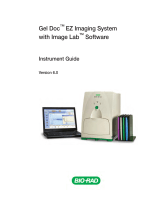 BIO RAD Gel Doc EZ System Instrument Manual
BIO RAD Gel Doc EZ System Instrument Manual
-
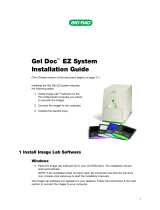 BIO RAD Gel Doc EZ System Installation guide
BIO RAD Gel Doc EZ System Installation guide
-
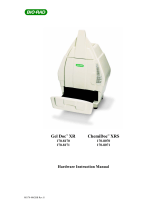 BIO RAD Gel Doc XR 170-8171 User manual
BIO RAD Gel Doc XR 170-8171 User manual
-
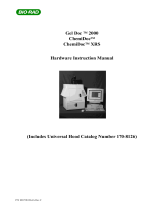 BIO RAD Gel Doc 2000ChemiDocChemiDoc XRS Hardware Instruction Manual
BIO RAD Gel Doc 2000ChemiDocChemiDoc XRS Hardware Instruction Manual
-
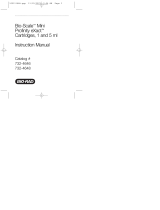 BIO RAD Bio-Scale User manual
BIO RAD Bio-Scale User manual
-
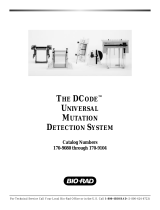 BIO RAD DCODE User manual
BIO RAD DCODE User manual
-
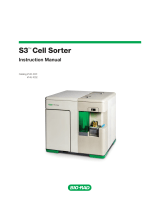 BIO RAD S3 User manual
BIO RAD S3 User manual
-
 BIO RAD PTC-200 Operating instructions
BIO RAD PTC-200 Operating instructions
-
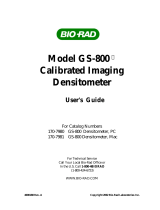 BIO RAD gs-800 User manual
BIO RAD gs-800 User manual
-
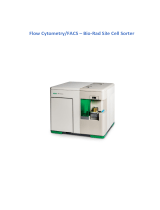 BIO RAD S3E User manual
BIO RAD S3E User manual
Other documents
-
Samsung AS19VB User manual
-
Kodak PROFESSIONAL HR 500 Plus User manual
-
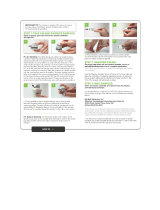 My Mold Detective MMD200 Operating instructions
My Mold Detective MMD200 Operating instructions
-
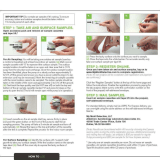 My Mold Detective MMD200 Operating instructions
My Mold Detective MMD200 Operating instructions
-
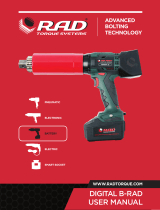 RAD Digital B- Battery Torque Wrench User manual
RAD Digital B- Battery Torque Wrench User manual
-
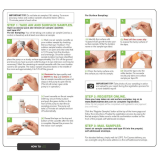 MyMoldDetective MMD105A Operating instructions
MyMoldDetective MMD105A Operating instructions
-
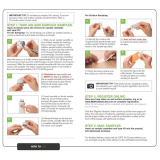 MyMoldDetective MMD200A Operating instructions
MyMoldDetective MMD200A Operating instructions
-
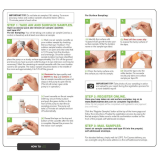 MyMoldDetective MMD103A Operating instructions
MyMoldDetective MMD103A Operating instructions
-
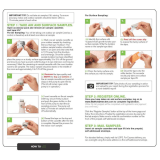 MyMoldDetective MMD100A Operating instructions
MyMoldDetective MMD100A Operating instructions
-
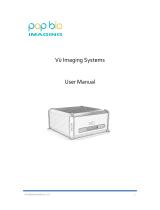 Pop-Bio VU User manual
Pop-Bio VU User manual




























































